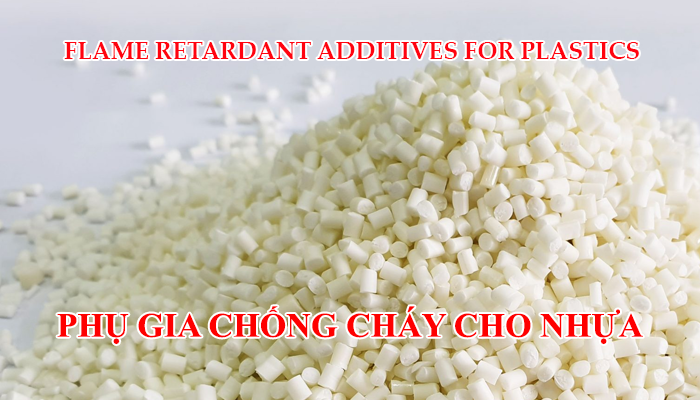
FLAME RETARDANT ADDITIVES FOR PLASTICS
A flame retardant additive is a substance that can delay or inhibit the spread of a flame by preventing chemical reactions that produce combustion or by forming a protective layer on the surface of a material.
FLAME RETARDANTS SUITABLE FOR EACH RESIN
FLAME-RETARDANT FINISHING OF COTTON FABRIC
DEVELOPMENT OF FLAME RETARDANTS
INTRODUCTION TO DIOCTYL ADIPATE (DOA)
FLAME RETARDANT ADDITIVES FOR PLASTICS
1. Definition
A flame retardant additive is a substance that can delay or inhibit the spread of a flame by preventing chemical reactions that produce combustion or by forming a protective layer on the surface of a material. They can act chemically or physically in the gaseous or solid phase through complex chemical reactions that cease to sustain combustion.
The advantages of flame retardant additives increase the ignition temperature of the material, slowing down the burning rate, reducing the rate of heat release, preventing the growth of flame, and reducing the amount of smoke produced.
2. Combination of antimony trioxide (ATO) flame retardant additive with decabromodiphenyl ethane (DBDPE)
Antimony trioxide acts as support agent, enhancing the effectiveness of halogenated flame retardants. Antimony trioxide is especially widely used in combination with decabromodiphenyl ethane.
Antimony trioxide itself is not flame retardant, however, when used in combination with decabromodiphenyl ethane, the synergistic effect of this mixture confers flame retardant properties. Antimony trioxide reacts with halogenated compounds and produces chemical compounds, which give a flame retardant function. The combination of antimony trioxide and decabromodiphenyl ethane makes it difficult to ignite and reduces flame propagation. Antimony oxide inhibits heat generation by redirecting combustion into a chemical reaction that produces no heat and absorbs it. Antimony also promotes char formation, protects the substrate from heat, and minimizes the diffusion of volatiles into the flame.

3. Application
In order to meet the best fire resistance with each different type of plastic, the content of use is also different.
For ABS resins, the combination of Antimony trioxide (ATO) with decabromodiphenyl ethane (DBDPE) not only increases the fire resistance, but it also improves the thermal stability of the base resin and reduces the number of combustible gases.
For PP resin, the combination of Antimony trioxide (ATO) with decabromodiphenyl ethane (DBDPE) enhances coal formation and reduces the rate of heat release during material combustion.
With the highly effective flame retardant ability of the combination of Antimony trioxide (ATO) with decabromodiphenyl ethane (DBDPE) in the plastic industry, it has attracted great attention from companies producing flame retardant materials.
Currently, Mega Vietnam General Business Co., Ltd is providing flame retardant additives such as Antimony trioxide, Decabromodiphenyl Ethane, etc. with quality assurance and competitive price. If you have any questions, please contact us.
>>>Click for the best CHEMICAL PRODUCTS on market at present<<<
Contact
MEGA VIETNAM
Office address: Floor 2-A2-IA20, Nam Thang Long Urban Area, Pham Van Dong Street,
Dong Ngac Ward, Bac Tu Liem District, Hanoi City, Vietnam
Email: contact@megavietnam.vn
Tel: (+84) 24 375 89089; Fax: (+84) 24 375 89 098
Website: megavietnam.vn
Hotline: 1800.577.728 Zalo: 0971.023.523





